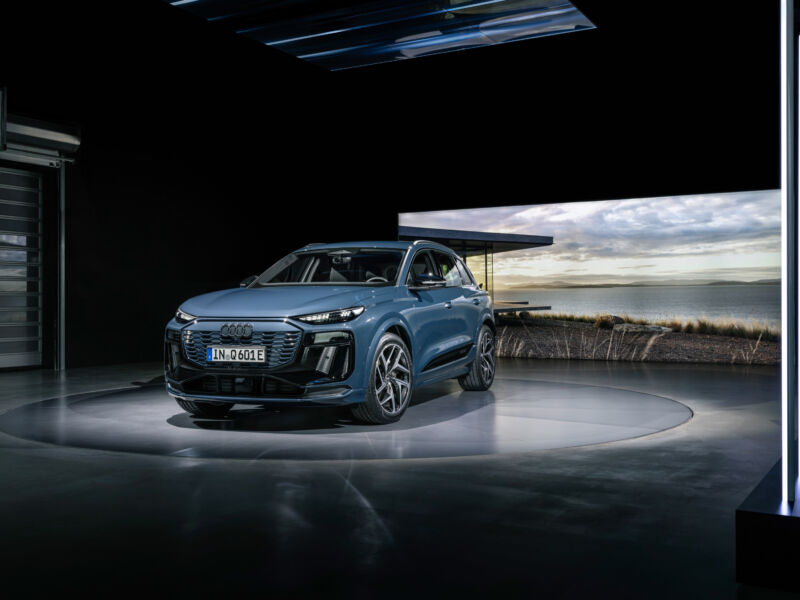
Audi
MUNICH—Audi’s new electric car platform is an important one for the company. Debuting in the new 2025 Q6 e-tron, it will provide the bones for many new electric Audis—not to mention Porsches and even Lamborghinis and Bentleys—in the coming years. Its development hasn’t been entirely easy, either; software delays got in the way of plans to have cars in customer hands in 2023. But now the new Q6 e-tron is ready to meet the world.
There’s some rather interesting technology integrated into the Q6 e-tron’s new electric vehicle architecture. Called PPE, or Premium Platform Electric, it’s been designed with flexibility in mind. Audi took the role of leading its development within Volkswagen Group, but the other brands within that corporate empire that target the upper end of the car market will also build EVs with PPE.
Since SUVs are still super-popular, Audi is kicking off the PPE era with an SUV. But the platform allows for other sizes and shapes—next year, we should see the A6 sedan and, if we’re really lucky, an A6 Avant station wagon.
-
The Q6 e-tron is a midsize SUV, measuring 187.8 inches (4,771 mm) long, 78.5 inches (1,993 mm) wide, and 65 inches (1,648 mm) tall.
Audi -
That’s as wide and tall as the Q8 e-tron, but four inches shorter, mostly in the 114.3-inch (2,998 mm) wheelbase, which translates to a little less rear leg and cargo room.
Audi -
The “quattro blisters” above each wheel arch prevent the shape from looking too slab-sided when you see it in person.
-
There’s a small frunk.
Audi -
Most of your luggage goes here.
Audi
Better batteries
There’s a new EV powertrain, a significant advancement over the one that powers Audi’s Q8 e-tron SUV. The cells are prismatic and made by CATL at a German plant, with a nickel cobalt manganese chemistry (in a roughly 8:1:1 ratio). It’s been simplified, with 12 modules, each made of 15 cells. Compared to the Q8’s pack, the new Q6 has 30 percent greater energy density at the pack level, as well as 5 percent more actual energy, despite a 15 percent reduction in the mass of the pack (1,257 lbs/570 kg).
It operates at 800 V, which enables very fast DC charging: The 94.9 kWh (useable) battery pack can charge from 10 to 80 percent in 21 minutes. Audi says it doesn’t have to throttle back from 270 kW until the state of charge increases past 40 percent, at which point it declines at a constant rate to 150 kW at 80 percent SoC. (Past 80 percent, a fast-charging EV will throttle back the charger significantly.)
Of course, that requires access to a DC fast charger capable of 800 V. For 400 V chargers, the battery pack cleverly splits itself into two 400 V packs using a mechanical fuse switch, then equalizes their SoCs, then charges them both in parallel at up to 135 kW. Audi says it went for this approach versus a DC-DC inverter because it saved weight. Both sides feature AC charge ports, with DC charging only on the driver’s side. Model year 2025 Q6 e-trons will feature CCS1 ports on the driver’s side, with the switch to J3400 taking place the following year.
-
A cutaway of the Q6 e-tron’s powertrain.
Jonathan Gitlin -
A closer look at the Q6 e-tron’s rear drive motors.
Jonathan Gitlin -
More motor components.
Jonathan Gitlin -
PPE EVs have AC charging ports on both sides.
Audi









